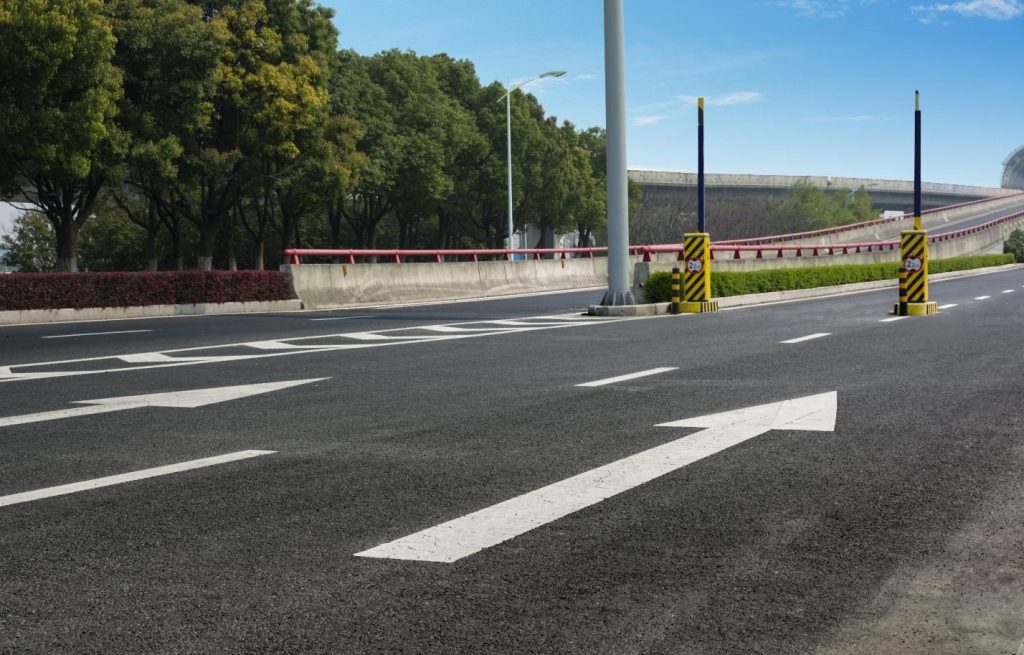Traffic volume is the first design input that a pavement engineer looks to since every axle that traverses the road somewhat takes away from its remaining service life. The rate of that loss depends on how heavy the truck is, how frequently it appears, and how loads are transferred through the various pavement layers. The understanding of these relationships helps to explain why a local street may flourish with a thin section while a freight route needs a far more ample structure.
Pavement Design Principles
Modern pavement design begins with the subgrade. The bearing capacity of the native soil, the moisture condition, the drainage, and the expected temperature range all serve to determine the necessary thickness of structural layers. Upon this base the engineer must choose between flexible pavement (asphaltic) and rigid pavement (concretes), each having a different method of distributing loads through the base and subbase.
Visit https://civilguruji.com/blog/rigid-pavement-and-flexible-pavement/682b26ca7a3c47aac3575d39 to know the difference between.
Design methods convert traffic in terms of cumulated damage, using ideas such as Equivalent Single Axle Loads (ESAL’s) or mechanistic-empirical transfer functions. Reliability, design period, and allowable risk of distress are then applied to determine the size of the various layers.
For asphaltic pavements, the thickness of the surface course, intermediate course, and base is balanced to control rutting or fatigue; for rigid pavements the slab thickness, joint spacing, and load transfer devices are balanced to control cracking or of pavement. In case of poor and varying subgrade soils, means of soil stabilization such as lime, cement or geosynthetics are specified for providing uniform support and consistent performance.
Load Distribution and Wear
A single truck fully loaded can cause many thousands, many times more damage than a car and the slow-moving heavy vehicles at intersections concentrate that damage more. Therefore, designers are particularly careful of truck percentages, turning movements and speed regimes to be used when they convert the raw counts into design loads.
- Heavier axle loads accentuate the tensile strains at the base of the asphalt layers and therefore hasten the fatigue cracking and alligator-pattern cracking.
- Channelized wheel paths concentrate the stress in a way that brings about permanent deformation (rutting) in flexible layers and corner cracking in slabs.
- Dynamic effects from braking, acceleration and grade changes produce high shear stresses, more especially near intersections, bus stops and ramps.
- Tire pressures and areas of contact effect shears near the surface; high pressures, for example, bring about raveling and top-crack deterioration with time.
Commercial vs. Residential Stress

Residential streets are largely passed over by passenger cars and school buses and the infrequent delivery truck and so in them the design ESAL’s remain modest, commercial streets on the other hand are always having freight, transit and service traffic moving through them. A mixture of multi-axle and tractor-trailers, refuse vehicles and buses in such numbers as to produce high loads repeated to each, especially in stop-and-go conditions.
The same distinction can be observed in the parking lots. A neighborhood retail parking lot accommodates itself to quick dwell time and light vehicles; a distribution center must be able to stand heavy truck parking, tight low speed turning, and concentrated weights at the loading docks.
Where “premium” tourism and event traffic meet, local knowledge becomes handy when determining truck incident factors and seasonal peaks. For project developers who desire an experienced asphalt contractor Anaheim Resort, a company which knows the running of the resort-area can help give an understanding of, the turning templates, the bus staging and the delivery schedules against actual incident loadings.
It is these differences that illustrate the unwise use of the “copy-paste” section. Even in a single property the loadings at docks, bus bays and fire lanes may require thicker sections of different materials than those used at general aisles and stalls.
Reinforcement Methods
When the traffic volume and mixture have been quantified, the materials and details which will withstand the serious modes of distress are chosen. This is not merely for initial strength, but for long life under millions of repetitions of loading and environmental.
The materials and methods will serve to resist the dominant mode of distress prevalent, viz:-
- The asphalt mixtures may be made with polymer-modified binder, with stone-on-stone skeletons and high VMA for the prevention of rutting under slow heavy traffic.
- The bases may be given high modulus or cement treated layers, in order to disperse the loads and lessen the tensile strain imposed on the overlaid asphalt.
- The addition of geosynthetics (geogrids or geotextiles) helps to give confinement and reduce reflective cracking on areas to be overlaid with thin bituminous concrete if previously met with cracked or jointed substrates. Click here for further reading.
- Where concrete pavement is in question, adequate presence of dowel bars at joints and tied concrete shoulders, and proper spacing of joints assist greatly in load transfer from slab to slab at joints and hence reduces faulting of joints.
- Good edge support, uniform compaction and adequate drainage reduce the weakening effects of moisture, which would otherwise increase rates of distressing.
Data-Driven Road Design
Counting vehicles is only the beginning. Agencies now have weigh in motion (WIM) sensors, automatic traffic recorders and probe data, which will show the diurnal variations in traffic and weekly and patterns at seasonal traffic. To this data set also can be added the lane –distribution factors, the projected counts which will ascertain volume being handled on the particular section, which leads to mechanistic – empirical modelling, which predicts dynamic strain, deflection and temperature gradients through the section offered.
Field testing of result completes the loop. As mentioned previously the measurements of the Falling Weight Deflectometer verifies the moduli of the layers, while the core and Ground Penetrating Radar (GPR) test will give information on thickness and uniformity of layers as well as their overall resistance to given loadings taken by thickness tests. With these pieces of information, the designer can size the layers correctly, to ascertain the correct use of concrete pavement or high-performance design of asphalt mixes.
The area might have targeted pavement maintenance triggers of crack sealing, thin overlays, stabilization of slabs noted, before progressive minor defects become major. The result is a pavement structure cut out for the true loading environments which will be met in service, which from a serviceability point of view gives a reliable performance after placement, and from an economical one a lower life cycle cost.
Conclusion
In the nutshell, traffic volumes govern all factors of material, methods of construction to the spacing of joints, and designing of mixtures which go together to make a successful pavement for traffic conditions where they occur. By taking raw counts and getting true and realistic on the road turns from these absorbed in some physical way into load spectra, together with the intelligent use of sound materials engineering, professional asphalt, and concrete paving services may produce pavements which will stand the present day demands of traffic and further onto future expansion.








